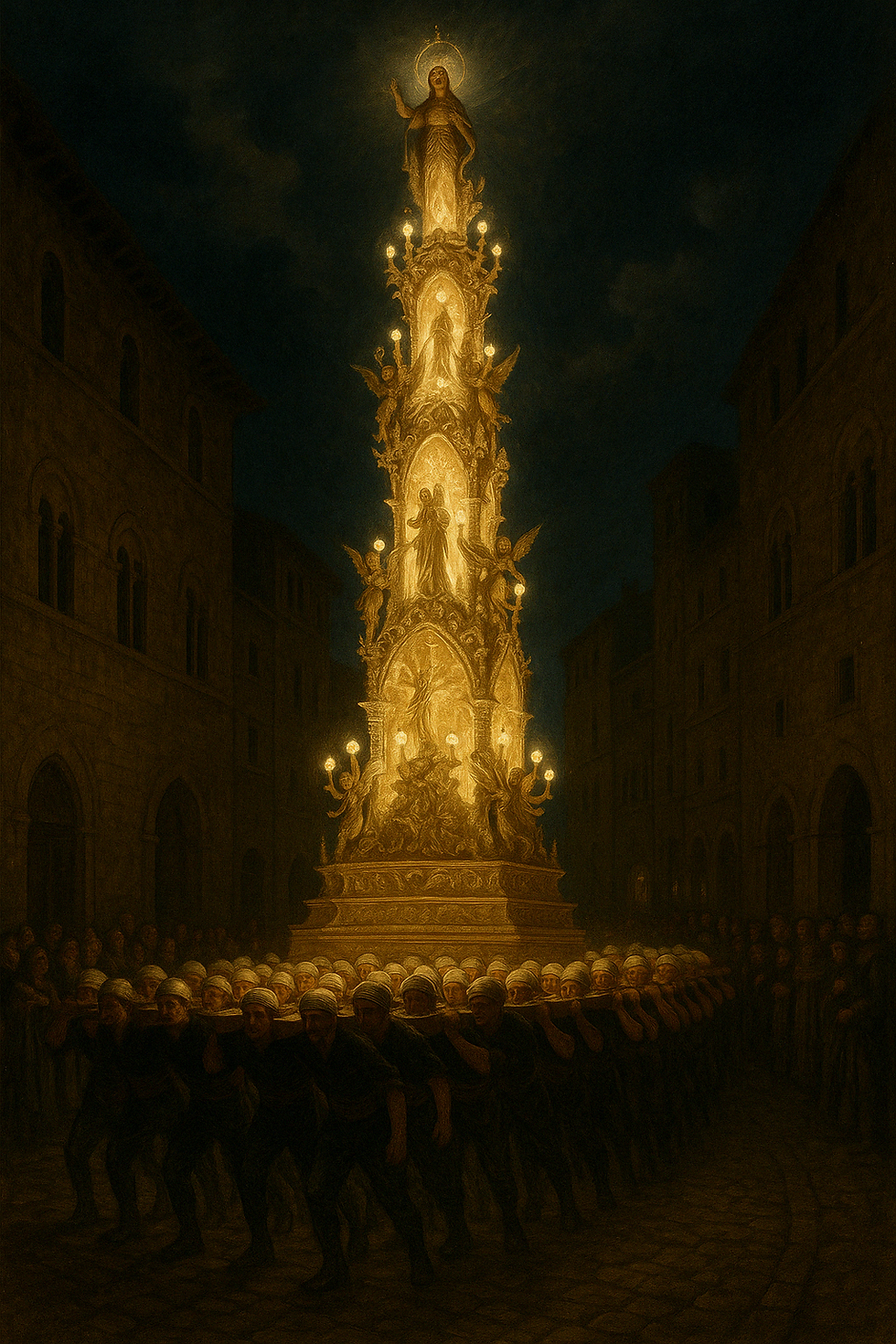Inside Viterbo’s Cathedral: Secret Stories, Popes, and Towers That Challenge the Sky*
- Giano di Vico

- Jun 23
- 2 min read
The cathedral features a Romanesque structure, with a Renaissance façade added in 1570 at the request of Cardinal Giovan Francesco De Gambara.The bell tower, completed in 1369, stands out for its Gothic style and distinctive bichromatic stonework.During World War II, the cathedral suffered heavy damage due to the bombings of 1944, but was later restored, bringing back its original Romanesque appearance.
🔔 The Bell Tower: Between Defense and Faith
Standing 32.70 meters tall, the bell tower is believed to have originally been a defensive tower belonging to the Tignosi family.Built in peperino and travertine, with alternating dark and light stone bands, it is a remarkable example of Gothic architecture from that era.
⚰️ The Crypt of the Bishops and Papal Mysteries
Inside the cathedral lies the Crypt of the Bishops, a solemn place preserving the remains of significant ecclesiastical figures.Among them is Pope John XXI, whose funerary monument can be seen in the left nave.Another pope, Alexander IV, was also buried in the cathedral, but his tomb has been lost over the centuries.
🎨 Artistic Treasures and Curiosities
The cathedral houses many artworks, including frescoes and paintings from various periods.A highlight is the vault of the apse, frescoed by Giuseppe Passeri, depicting The Last Judgment and the Cardinal Virtues.In the left nave, visitors can admire a 12th-century panel of the Madonna della Carbonara, a fine example of Byzantine art.
📌 Visitor Information
📍 Address: Piazza San Lorenzo, Viterbo🕒 Opening Hours: Generally open daily; it’s recommended to check specific times before visiting🎟️ Admission: Free; some areas may require a guided tour📷 Tip: Don’t forget your camera to capture the architectural and artistic details
The Cathedral of San Lorenzo is not just a place of worship—it is a true treasure chest of history, art, and spirituality,telling centuries of Viterbo’s faith and cultural legacy.




Comments